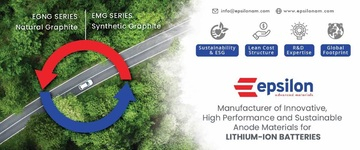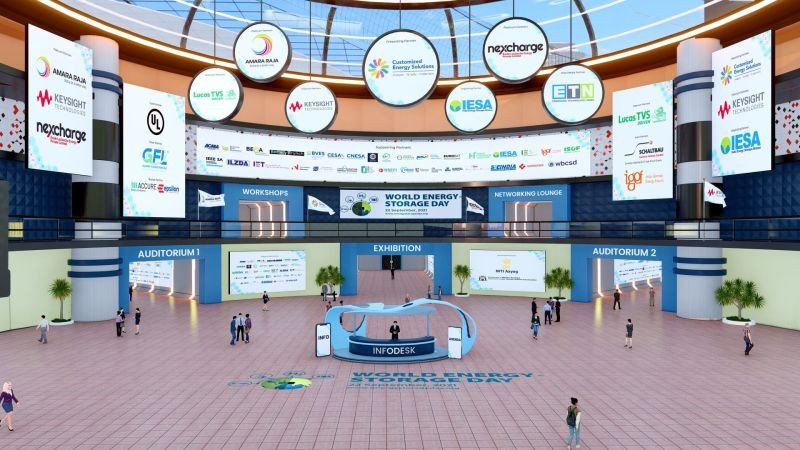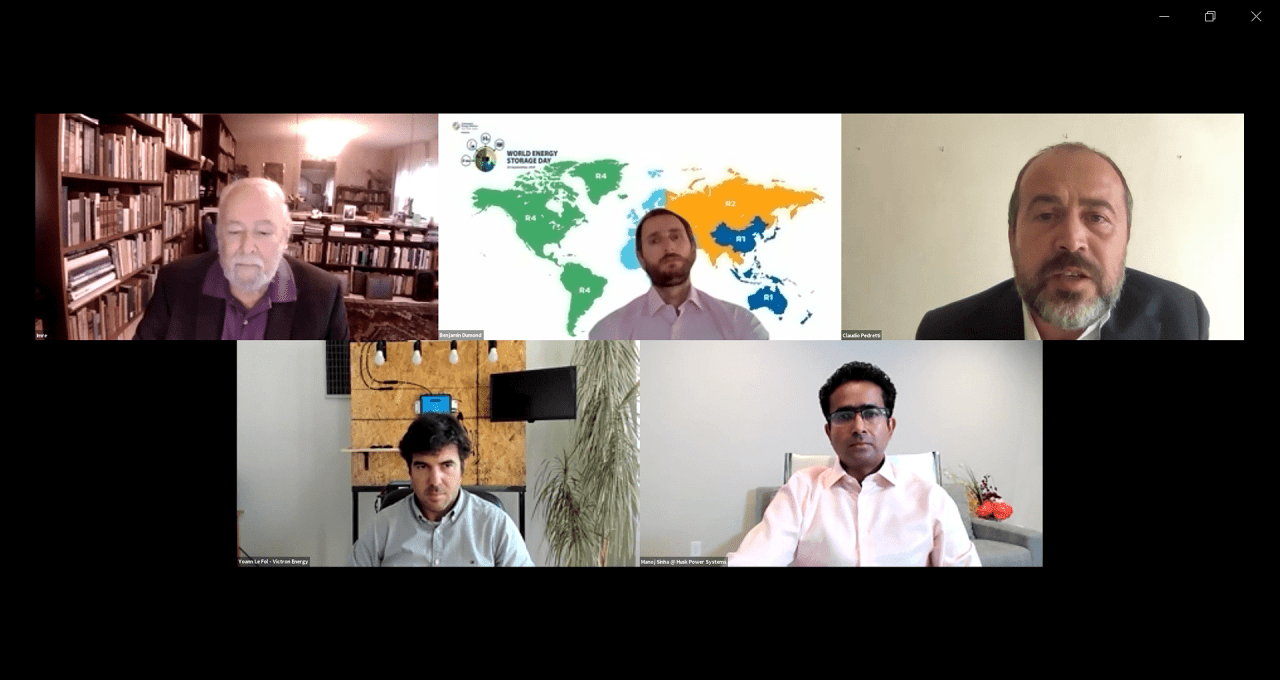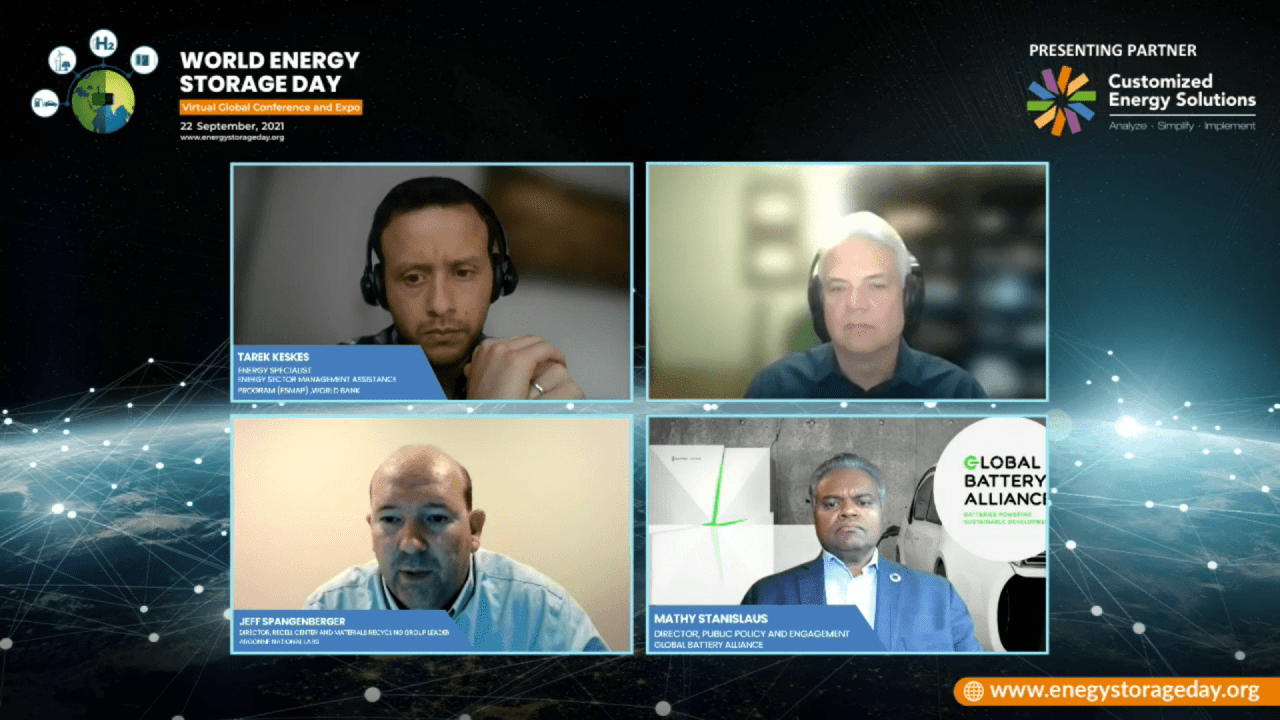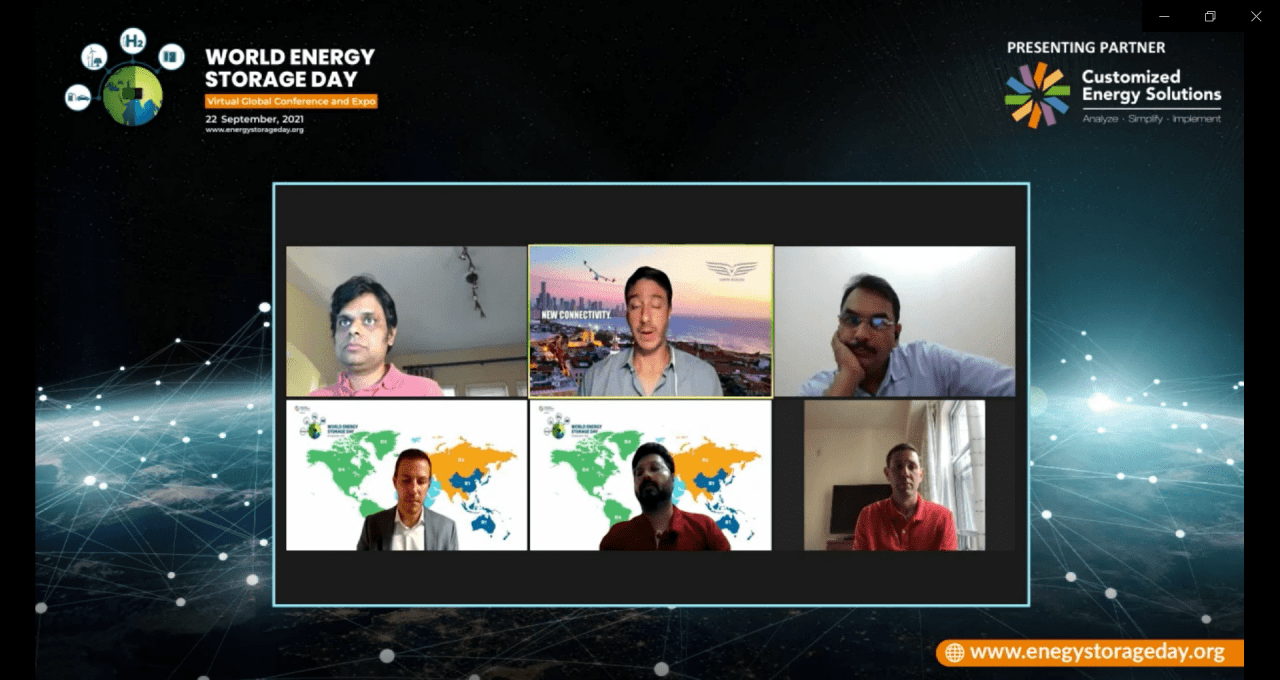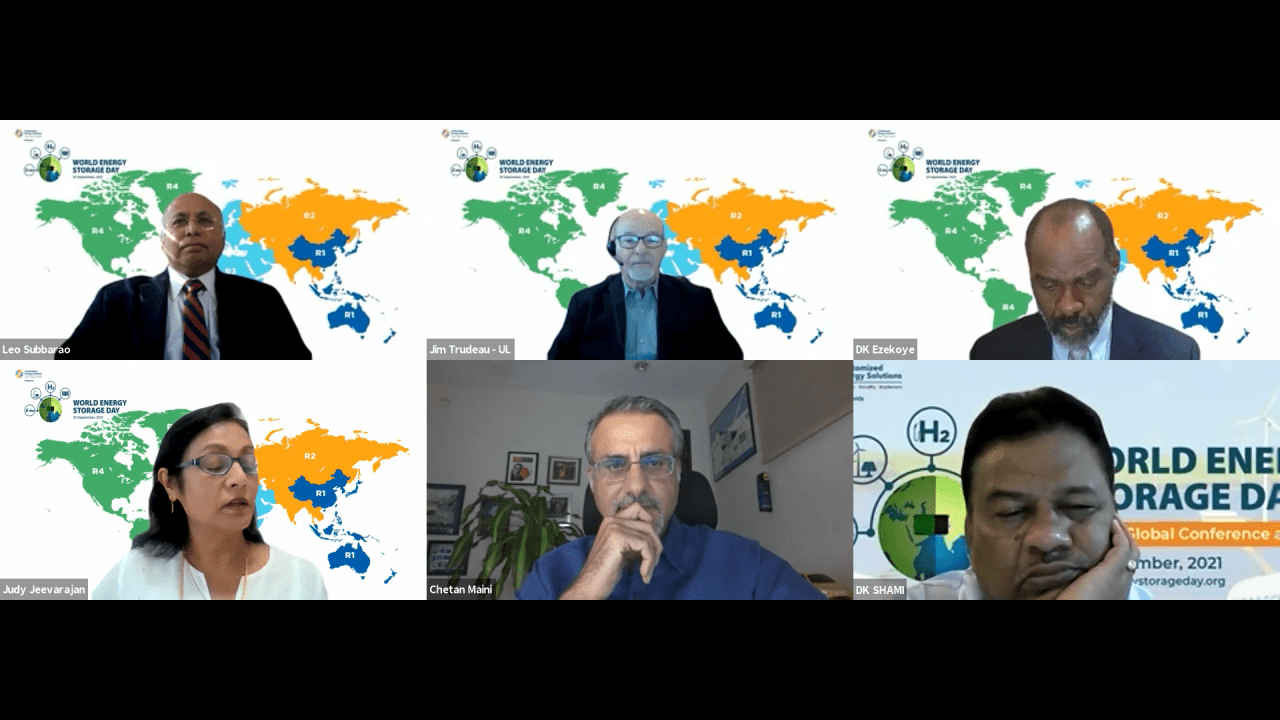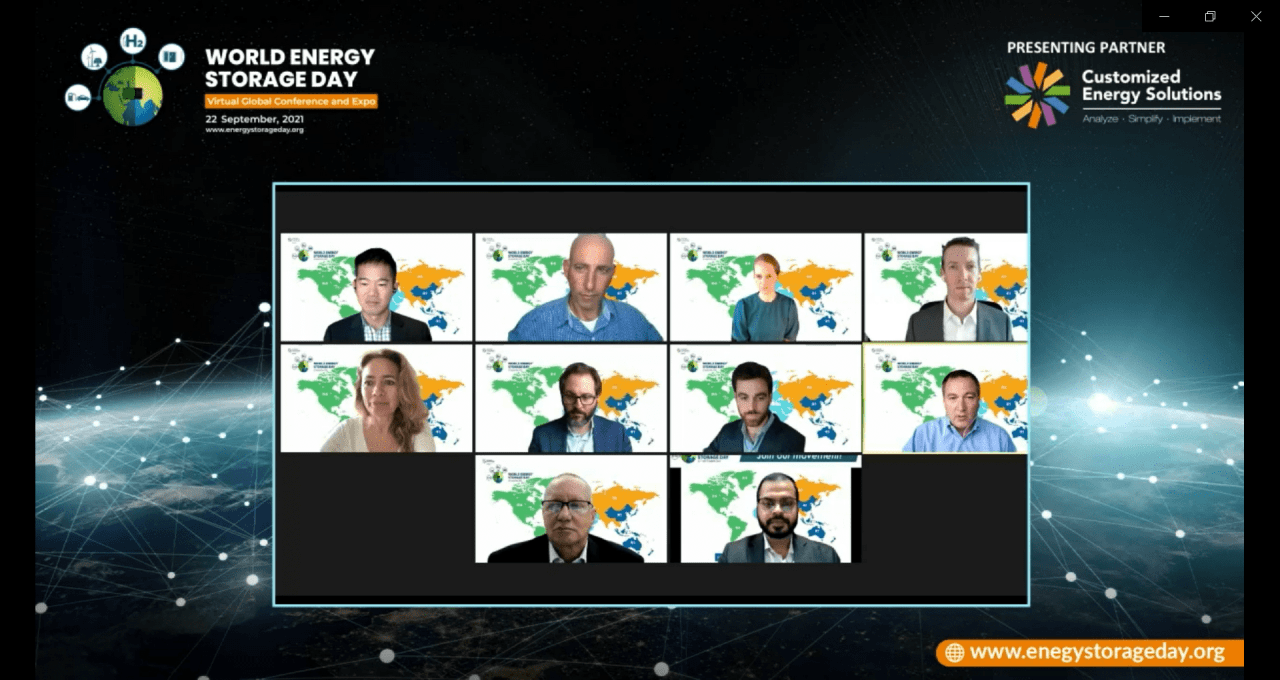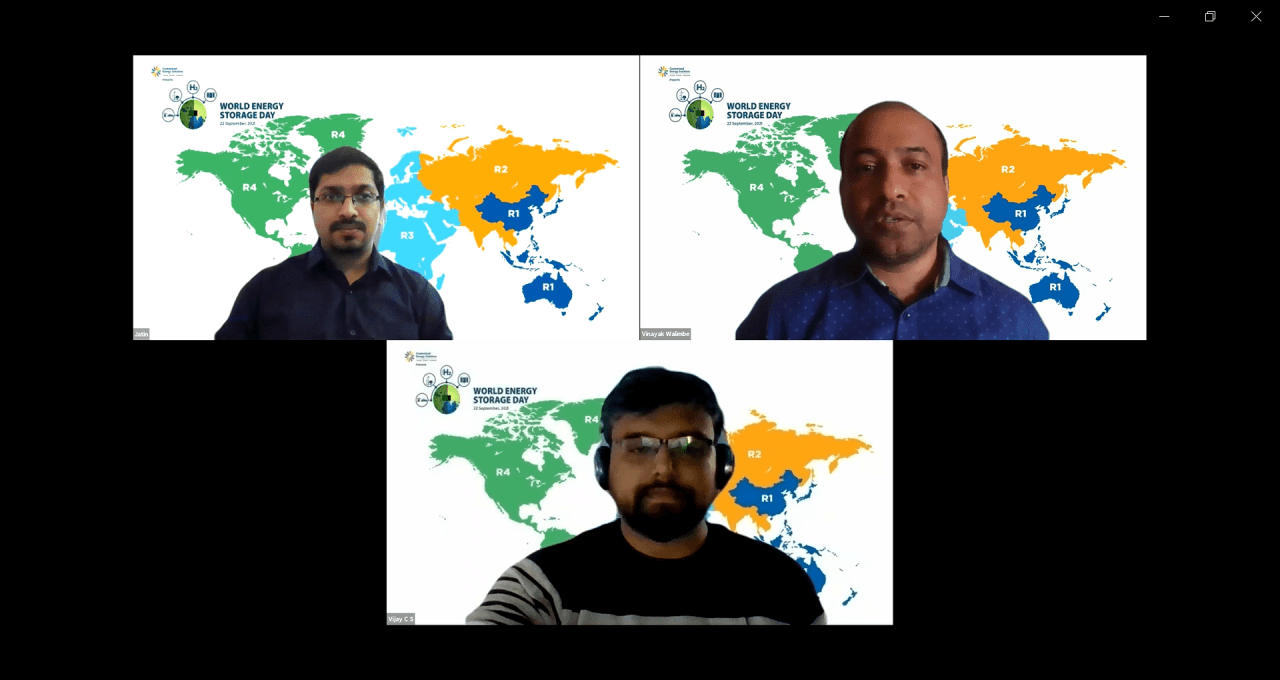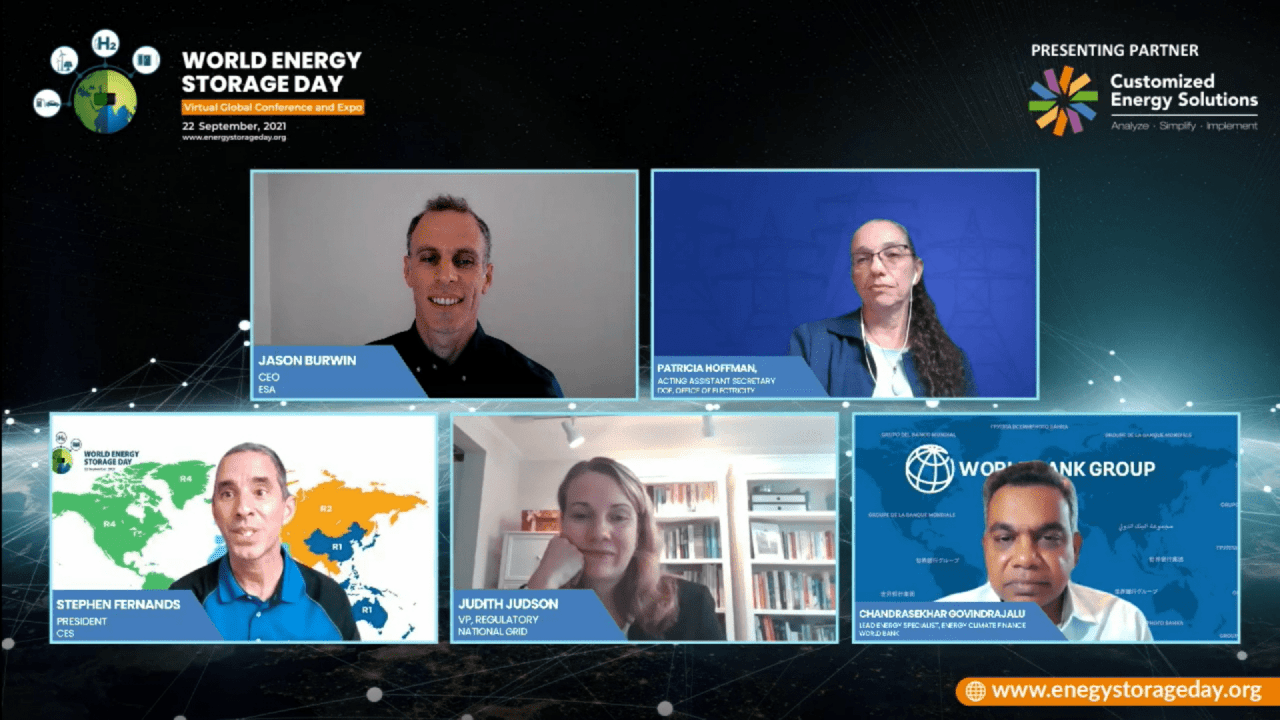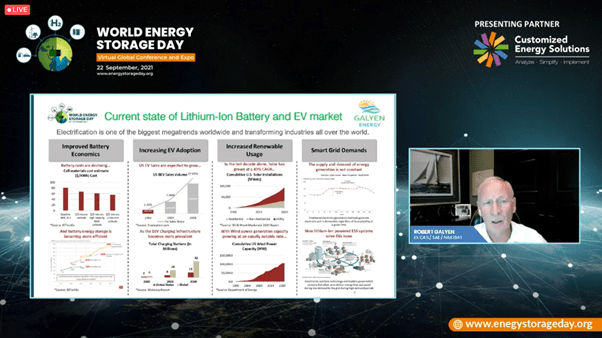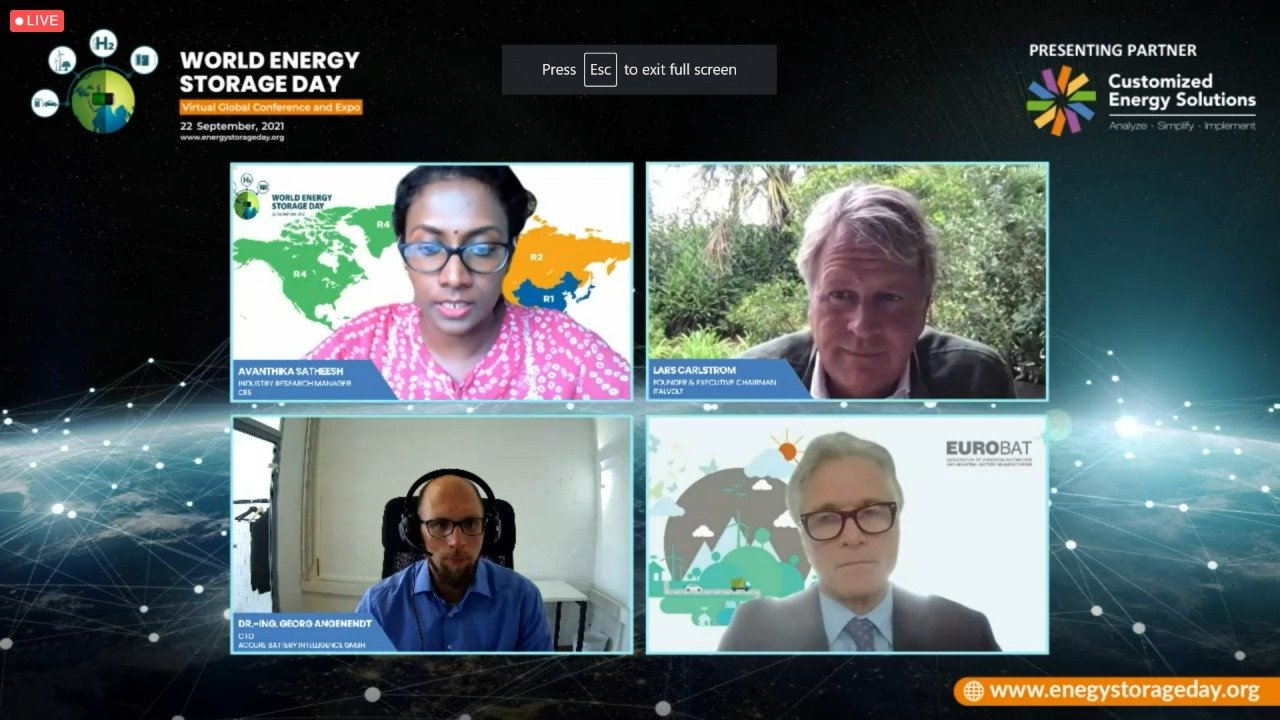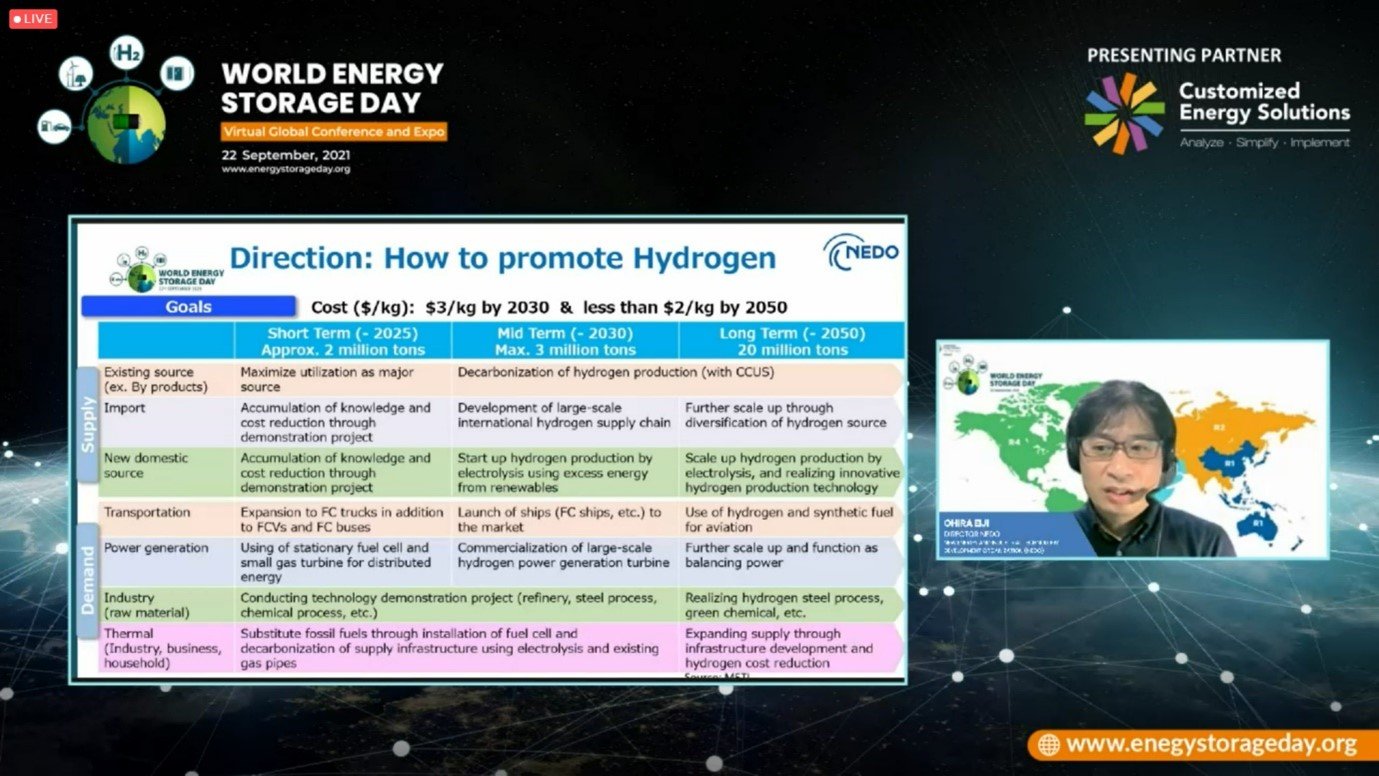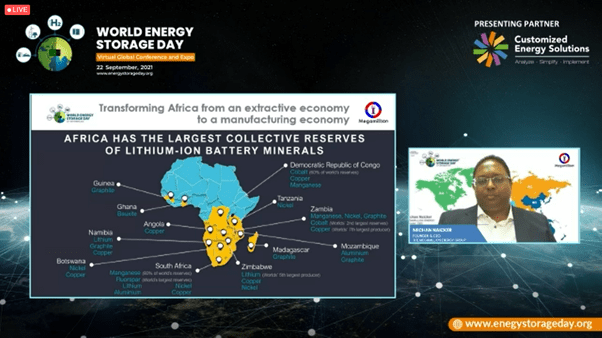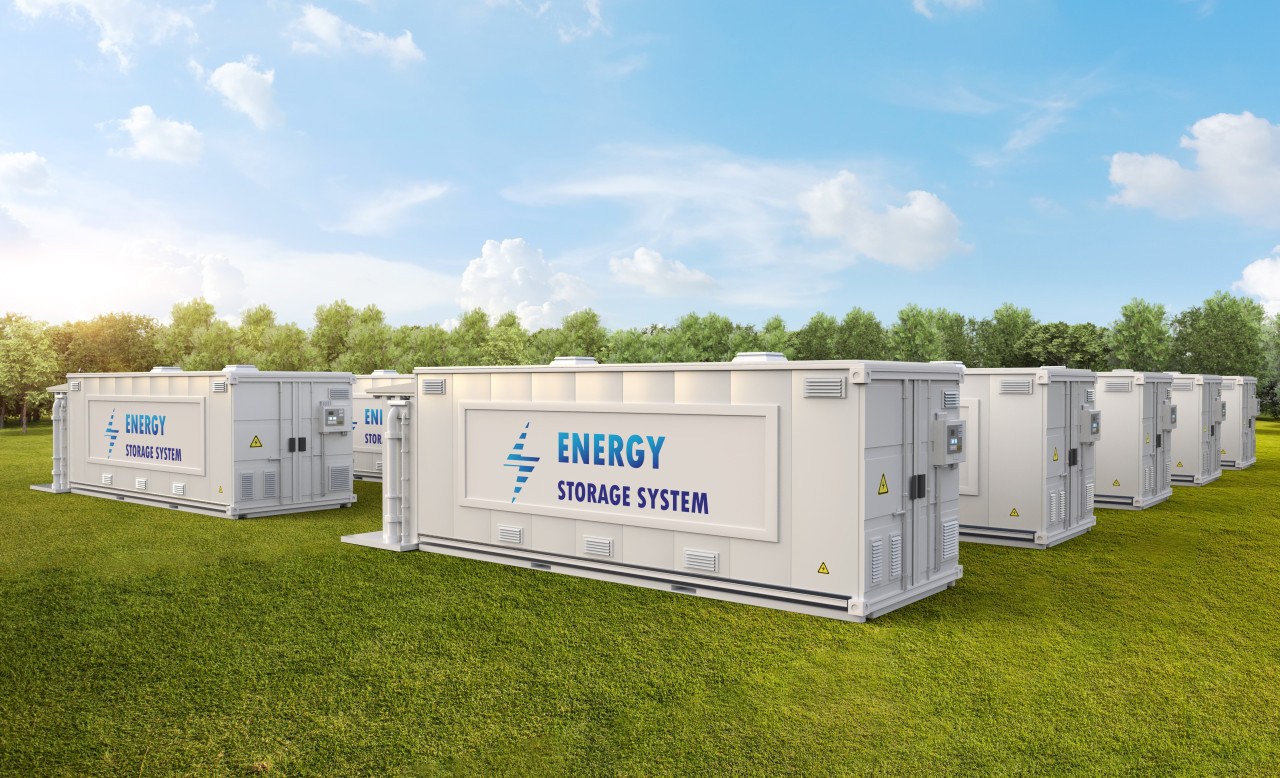World Energy Storage Day 2021: Combating climate change through storage technologies
The recently concluded 5th World Energy Storage Day (WESD) called upon global collaboration in supply chain, R&D, to developing markets and innovative business models among all storage industry stakeholders worldwide.
As the renewable energy capacity reaches record levels globally, energy storage technologies are set to play a key role in integrating higher share of renewables on the grid and combating climate change -- this was the resounding message heard at the recently concluded 5th World Energy Storage Day (WESD).
"This decade presents the biggest opportunity and perhaps the last chance for all of us to reverse the trend driving climate change," said Dr. Rahul Walawalkar, President of India Energy Storage Alliance (IESA) in his keynote address at the WESD – Virtual Global Expo & Conference held last week.
A range of energy storage technologies are poised to play a key role in decarbonizing the electric grid, mobility as well as other industrial sectors, he added.
"Although there is competition among different forms of storage technologies today," Dr. Walawalkar emphasized, "the real fight is against the status quo."
Customized Energy Solutions (CES) and India Energy Storage Alliance (IESA) organized the WESD - Global Expo & Conference for the 5th consecutive year, bringing together industry veterans, policymakers, researchers, and energy storage and academia professionals from around the world on a single platform to deliberate on the role of energy storage as the world transitions to low-carbon, green and resource-efficient economies.
The event witnessed a 40,000+ virtual footfall from over 60 countries and included 150 international speakers in a 24-hour insightful conference, deliberating on the ongoing policy, research & innovation, industry trends & initiatives in stationary energy storage, e-mobility, green hydrogen, and manufacturing sectors in Asia, Europe, the Middle East, and Africa and the Americas.
This year, in addition to the 16 sessions, WESD hosted a 'Women in Energy' roundtable, 'Clean-tech Business' forum along with 10 expert-led workshops to deepen the participants understanding on an array of subjects such as solar-plus-storage, EV charging infrastructure, energy storage systems, energy storage project modeling, EV battery fire and safety, long-duration storage, recycling, and circular economy, energy access, urban air mobility.
Like in the past years, WESD-2021 saw a gathering of veterans of the storage industry. Following are few of the key ideas shared during the global conference.
Stationary Storage
Ghanshyam Prasad, Joint Secretary, Ministry of Power, Govt. of India
"We [India] are also drafting the National Electricity Policy; the 2005 policy is being re-drafted. The key focus in that policy is going to be energy transition, which will further focus on the storage system and will include BESS, hydro-pump storage, hydrogen, and all the types of storage, which is a concern for the electricity sector. Some of the sops that were given to the RE sector will be given to the storage sector as well."
Patricia Hoffman, Acting Assistant Secretary, U.S. Department of Energy (DOE)
"We recognize the need for resilience technology for advanced energy storage in the USA. Longer energy storage technologies are needed as we advance. We are driving towards technologies that will cover 8-12 hours of battery power. We also recognize the need for diversity in energy storage technology to provide flexibility to the electric grid. At DOE, we started thinking of programs that will continue energy storage development and announced energy storage challenges to discover novel technologies. On June 7, the USA launched Energy Earthshots and the first of the program was Hydrogen Energy Earthshots. It's exciting to see the momentum around energy storage; we aim to accelerate its adoption in the market."
Matt Stein; Representative; China Energy Storage Alliance (CNESA)
"China's energy storage is expected to reach 35-56 GW in 2025, with new energy storage reaching 150 GW by 2030, thanks to the rapid increase in new energy penetration."
Rahul Jain, Head of Energy Storage, ReNew Power
"Today we offer the cheapest form of renewable energy available anywhere globally. India is about to achieve its goal of 175 GW. Both these are big statements to make to the entire world."
"The rapid growth has been possible due to the country's favorable policies. Whether it is the targets announced, or the specific focus areas like exemptions and waivers granted, whether it is transmission charge waivers, or as simple as an extension of a RE project under construction due to covid-19 reasons, or financial packages for DISCOMS. All of these have added on to the growth which we are seeing."
Jacopo Tosoni, Policy Officer, European Association for Storage of Energy (EASE)
The regulation has a considerable effect on the energy storage sector. We witness significant growth despite the COVID-19 pandemic that took the world by storm. Customers for industrial and commercial applications have been conservative in 2021 as they focus on recovery. Yet, new businesses have made a case for energy storage across the sector. New business models focus on post-COVID recovery have been emerging.
E-mobility
Gregory Poilasne; Co-Founder, Chairman & CEO; Nuvve
"Electric grid is not ready and smart charging will not be enough to address the needs of the EV industry. An ideal solution is to develop vehicle-grid integration to achieve low volatility."
Robert Galyen; SAE International Fellow and Battery Standards Steering Committee Chairman and Chairman Emeritus & CTO, NAATBatt International
"Electrification is one of the biggest megatrends worldwide and transforming industries all over the world."
"There are several predictions that by 2040-50 there will be some major improvements and growth but along with that requires the development for the components that support the electrified vehicles."
Lars Carlstrom; Founder & CEO; Italvolt
We are building a 45 GW Gigafactory outside Europe and will be able to support 18.6 million electric vehicles.
The demand will be higher than supply in Europe, which will be a challenge for carmakers. The lack of availability of minerals for Gigafactory in Europe will also be an opportunity as well as a challenge to address. To bring back the supply chain close to the factory will be one of our agenda going forward.
Kenji Yodese, Manager, Toyota Tusho Co.
"Balanced power with V2G technology is essential to expand the reach of renewable energy in the emerging market."
Vikram Gulati, Country Head & Sr. VP – Toyota Kirloskar Motor
Despite huge efforts to spur e-4W adoption, projections by BNEF for India by 2025 are 1.8 to 2 percent penetration of new vehicles sales. By 2030 it will be 8 percent. Going forward the government can have a huge impact on off-take for BEVs as well as the creation of infrastructure for the adoption of EVs. The key here is to bring down the price of EVS, for which we need to see how rapidly we can scale up manufacturing of EV parts in India at a global scale and global quality. PLI will play a part, but GoI needs to connect taxation structure to vehicles based on carbon emissions.
Paul Beach; President; Octillion Power Systems
In order to bring more renewables to the grid and move away from traditional technology (coal and gas) and then move toward EVs, we see that there are different players who are working with their self-interest so this is like a symphony but there is no conductor who is organizing all these different players in a concrete way, helping the industry move in a certain direction. So, it is people like us who have to come together and conduct the symphony.
Green Hydrogen
Tarun Kapoor, Secretary, Ministry of Petroleum & Natural Gas, Government of India
"Green Hydrogen-powered vehicles would become a reality in the future as the planning and discussions are on cards. We could face various challenges in terms of assembling, plants, storage, and transportation, but these odds are short-lived as India is making tremendous progress in using renewable energy sources and will continue to do so."
Ohira Eiji; Director NEDO; New Energy and Industrial Technology Development Organization (NEDO)
"Hydrogen is key to achieving carbon neutrality. The technology is ready, there is a need to enhance its application and improve efficiency. Scaling-up and integration with other energy systems are critical to this endeavor."
Alan Kneisz; Global Business Development Director; Cummins - Hydrogenics
"Hydrogen is the most abundant zero-emission fuel available. With aggressive decarbonization targets, captive markets have large demands for green hydrogen. Producing green hydrogen can be cost-effective, considering some of the world's lowest renewable energy prices."
Don Owens, CEO of HNO Green Fuels
"Addressing back carbon is critical to address the effects of climate change. Green Hydrogen is the right technology to help cut black carbon emissions and ultimately save the planet."
Cornelius Matthes; CEO; Dii Desert Energy
The oil and gas market has declined over the past years, and therefore it is inevitable to start massively diversifying in this decade. Even the region (MENA) understands this. There is a massive development in the region with no shortage of bold initiatives by developers, however, to work in an international context and to create joint markets (globally) for green molecules is what is needed at the moment.
Manufacturing & Innovation
Sanjiva De Silva; Counsellor (Industry, Science, Energy & Resources); Australian High Commission India
"Both the Australian and Indian governments are encouraging private sector investments in mining and allied industries, whose partnership stems from some commonalities and vision of addressing environmental and climate change challenges."
Nechan Naicker; Founder & CEO; The Megamillion Energy Group
"Localizing the lithium-ion battery value-chain offers an unprecedented opportunity for sub-Saharan Africa to establish itself as the global EV manufacturing powerhouse. It offers a big opportunity to start mega industries – from mining minerals, beneficiation to actually making battery-grade powder and more."
Stefan Louis, Chief Executive Officer and Chief Technical Officer, Nexcharge
India as a country has immense potential to grow as a pioneer in energy storage and set an example for others. The Li-Ion market in India would see a significant shift and reach 80 GWh by 2030 and in an optimistic scenario, we could witness the market reaching 160 GWh.
Chris Bandy; Investment and Trade Commissioner Middle East and South Asia, Government of Western Australia
"Western Australia is a leading region with all key minerals meant for manufacturing rechargeable batteries. Our key priorities are to improve participation in global supply chains, promote investment opportunities, certify battery minerals, support energy storage applications, and develop local capabilities."

